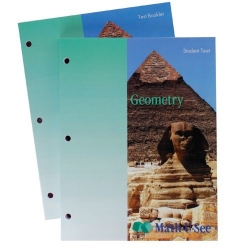- Curriculas
- Math-U-See Geometry
Math-U-See Geometry
HotGeneral info
Type of product
Publisher
Subject
Grade Level
Learning Style
Religious Affiliation
Media Type
Purchase from
Points, lines, planes, angles, circles, triangles, quadrilaterals, Pythagorean Theorem, conic sections, proofs and more.
The Geometry Instruction Pack contains the instruction manual with lesson-by-lesson instructions and detailed solutions, and the DVD with lesson-by-lesson video instruction.
An Online Co-op Class is available for this level.
User reviews
3 reviews
We love all of Math U See, but this Geometry is very well done. My children enjoy learning Geometry with this.
Grade levels used
- 9
- 10
- 11
- 12
Pros
Easy to use and understand.
Cons
Videos should be updated
Do you recommend?
Yes!
MC
Michelle Cook
It might have been that it was just so different from other maths we have used, but this seemed a bit awkward. My son learned the material to pass the tests, but didn't seem to retain it.
Grade levels used
10
Pros
Low prep
Cons
Retention was less than desired
Do you recommend?
yes
SP
Shelly P
We used this last year and it has a very thorough coverage of content. The only difficulty we had was in the last few chapters where we found some of the practice exercises were not covered in the text or video. However, I did not go to the website, instead I contacted a Math teacher to help out.
Grade levels used
10
Pros
Thorough content coverage
Cons
Last few chapters there were questions on the worksheets that were not covered in the text or video
Do you recommend?
Yes
MS
Marcie Sextro

